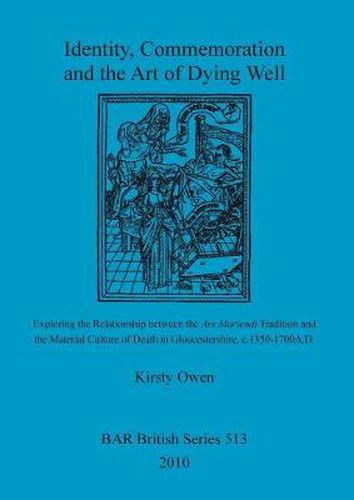Readings Newsletter
Become a Readings Member to make your shopping experience even easier.
Sign in or sign up for free!
You’re not far away from qualifying for FREE standard shipping within Australia
You’ve qualified for FREE standard shipping within Australia
The cart is loading…






This title is printed to order. This book may have been self-published. If so, we cannot guarantee the quality of the content. In the main most books will have gone through the editing process however some may not. We therefore suggest that you be aware of this before ordering this book. If in doubt check either the author or publisher’s details as we are unable to accept any returns unless they are faulty. Please contact us if you have any questions.
This study considers how the treatment of death in related forms of material culture might have contributed to the definition of elite identity and the constitution of power structures throughout the changes which took place in England c. 1350-1700. The following discussion will also assess the nature of identity and how it is comprehended in past and contemporary theoretical discussion. The formation of medieval and early modern elite identities will be considered with reference to the funerary material culture of a single region, Gloucestershire, focusing intensively upon the iconographical and textual themes presented therein and analysing these within the context of contemporary social and religious change. This evidence will be considered against the ideal of ‘dying well’ as presented in the Ars Moriendi texts. It is suggested that the ideological potential of this concept was exploited to its fullest potential during the period under study. The idealised pious death provided affluent members of society with a focus for competition, the significance of which can only be fully comprehended if the texts are analysed alongside other forms of material culture.
$9.00 standard shipping within Australia
FREE standard shipping within Australia for orders over $100.00
Express & International shipping calculated at checkout
This title is printed to order. This book may have been self-published. If so, we cannot guarantee the quality of the content. In the main most books will have gone through the editing process however some may not. We therefore suggest that you be aware of this before ordering this book. If in doubt check either the author or publisher’s details as we are unable to accept any returns unless they are faulty. Please contact us if you have any questions.
This study considers how the treatment of death in related forms of material culture might have contributed to the definition of elite identity and the constitution of power structures throughout the changes which took place in England c. 1350-1700. The following discussion will also assess the nature of identity and how it is comprehended in past and contemporary theoretical discussion. The formation of medieval and early modern elite identities will be considered with reference to the funerary material culture of a single region, Gloucestershire, focusing intensively upon the iconographical and textual themes presented therein and analysing these within the context of contemporary social and religious change. This evidence will be considered against the ideal of ‘dying well’ as presented in the Ars Moriendi texts. It is suggested that the ideological potential of this concept was exploited to its fullest potential during the period under study. The idealised pious death provided affluent members of society with a focus for competition, the significance of which can only be fully comprehended if the texts are analysed alongside other forms of material culture.